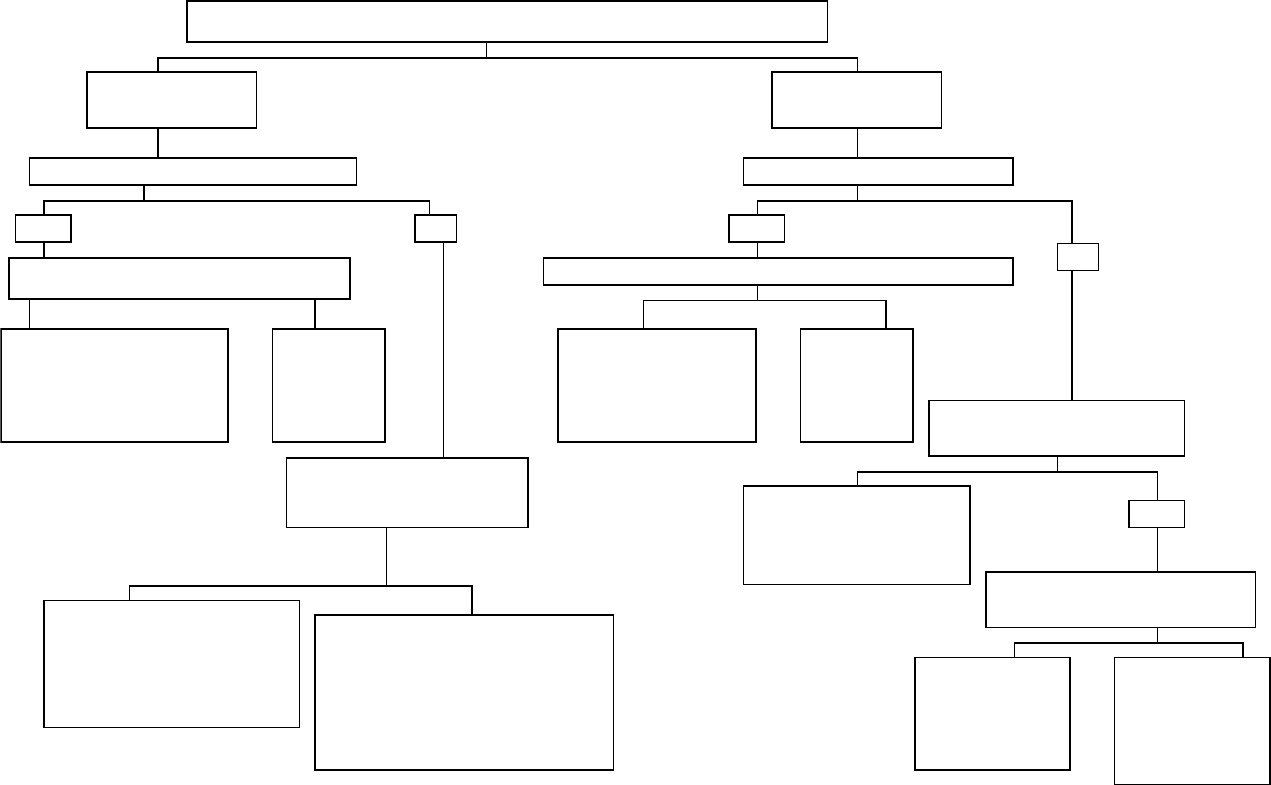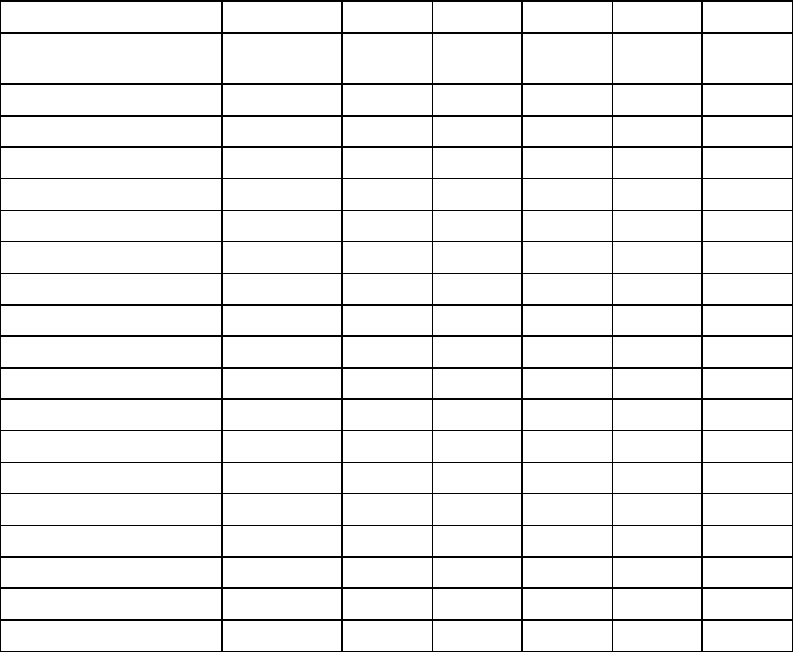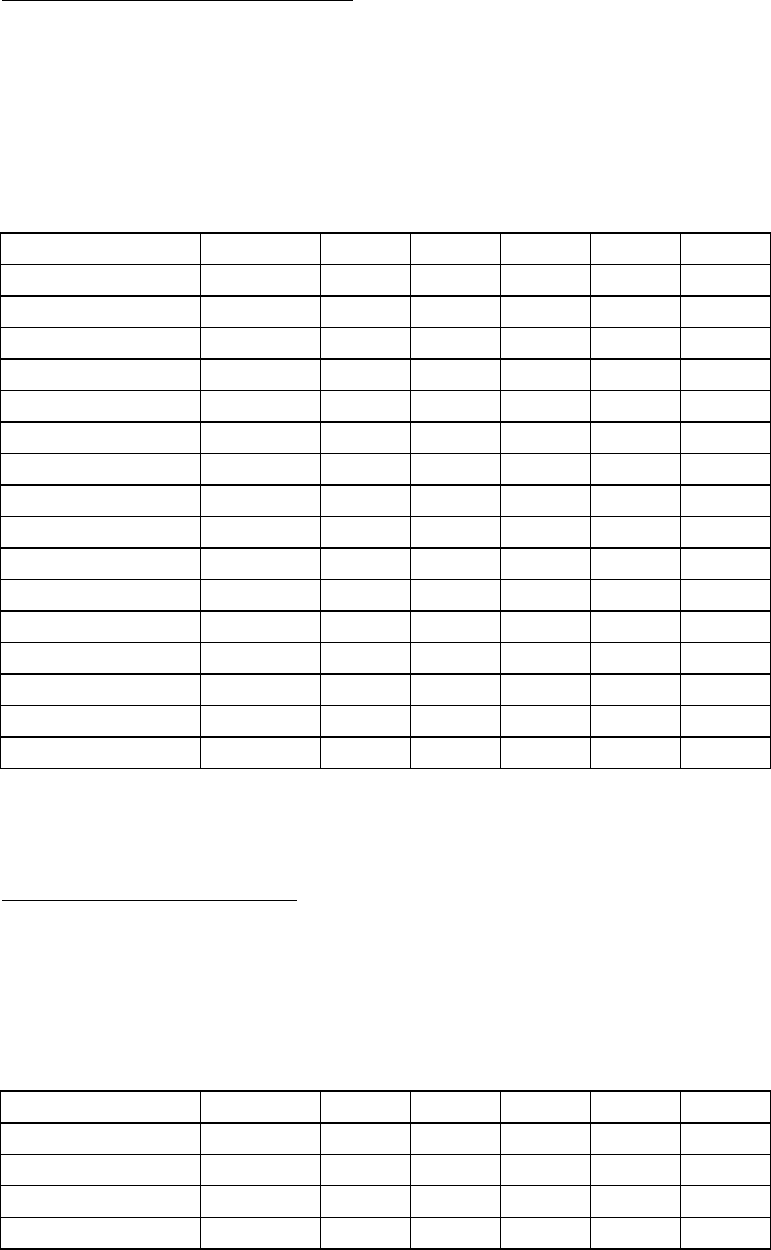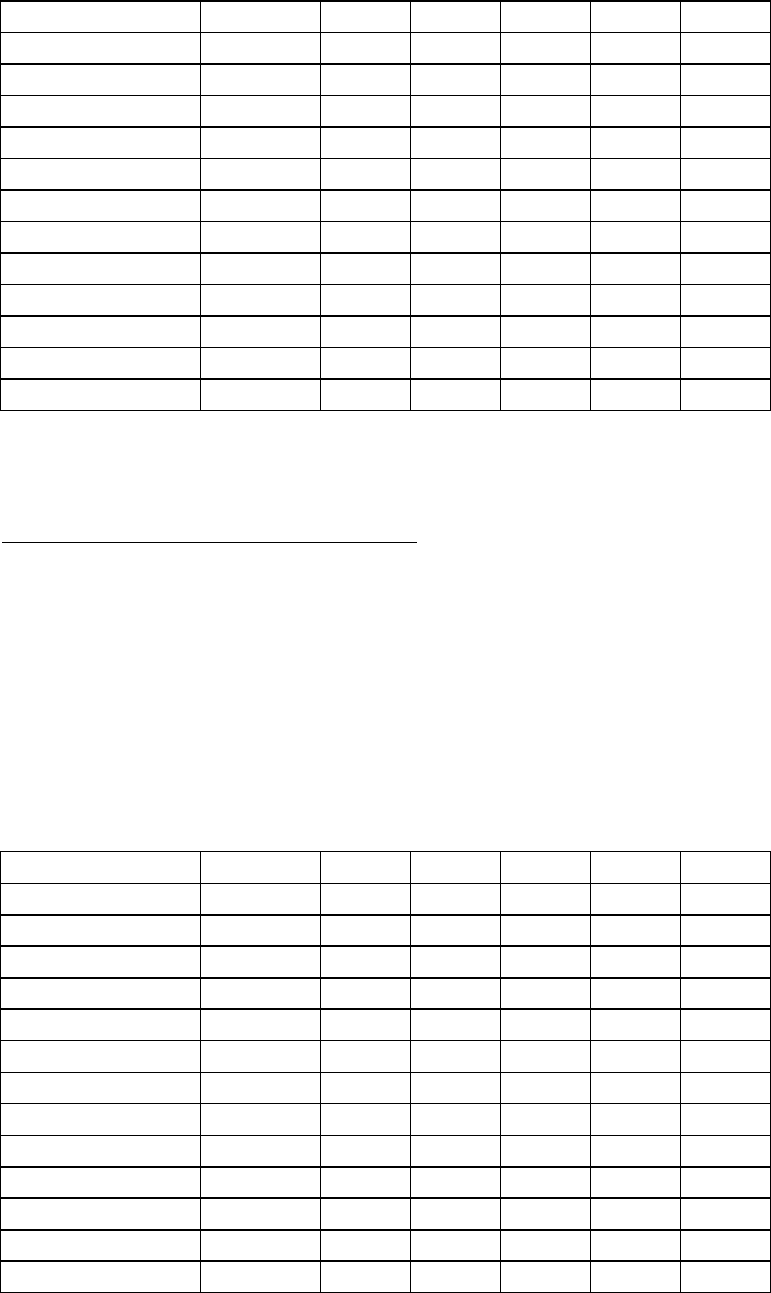Damodaran A. Applied corporate finance
Подождите немного. Документ загружается.


14
14
The final consideration is the marketability of existing investments. Two
considerations go into marketability. One is whether existing investments earn excess
returns; firms are often more willing to divest themselves of assets that are earning less
than the required return. The other, and in our view the more important consideration is
whether divesting these assets will generate a price high enough to compensate the firm
for the cash flows lost by selling them. Ironically, firms often find that their best
investments are more likely to meet the second criterion than their worst investments.
We summarize our conclusions about the right route to follow to the optimal,
based upon all these determinants, in table 9.2:
Table 9.2: Optimal Route to Financing Mix
Desired Speed
of Adjustment
Marketability of
existing investments
Quality of
new
investments
Optimal Route to changing debt
ratio
Urgent
Poor
Poor
Recapitalize
Urgent
Good
Good
Divest & buy back stock or
retire debt
Finance new investments with
debt
Urgent
Good
Poor
Divest & buy back stock or
retire debt
Gradual
Neutral or Poor
Neutral or
poor
Increase payout to stockholders
or retire debt over time.
Gradual
Good
Neutral or
poor
Divest and increase payout to
stockholders or retire debt over
time.
Gradual
Neutral or Poor
Good
Finance new investments with
debt or equity.
We also summarize our discussion of whether a firm should shift to its financing mix
quickly or gradually, as well as the question of how to make this shift, in figure 9.1.
While we have presented this choice in stark terms, where firms decide to use one
or another of the four alternatives described above, a combination of actions may be what
15
15
is needed to get a firm to its desired debt ratio. This is especially likely when the firm is
large and the change in debt ratio is significant. In the illustrations following this section,
we consider three companies. The first, Nichols Research, is a small firm that gets to its
optimal debt ratio by borrowing money and buying back stock. The other two, Disney
and Time Warner, choose a combination of new investments and recapitalization, Disney
to increase its debt ratio, and Time Warner to decrease its debt ratio.

16
16
Is the actual debt ratio greater than or lesser than the optimal debt ratio?
Actual > Optimal
Overlevered
Actual < Optimal
Underlevered
Is the firm under bankruptcy threat?
Is the firm a takeover target?
Yes
No
No
Recapitalization
1. Equity for Debt swap
2. Renegotiate with
lenders
Does the firm have good
new investments?
Yes
Take good projects with
new equity or with retained
earnings.
No
1. Pay off debt with retained
earnings.
2. Reduce or eliminate dividends.
3. Issue new equity and pay off
debt.
Yes
No
Does the firm have good
new investments?
Yes
Take good projects with
debt.
No
Do your stockholders like
dividends?
Yes
Increase
dividends or
pay special
dividends
No
Stock buyback
program
FIGURE 9.1: A FRAMEWORK FOR CHANGING DEBT RATIOS
No
Recapitalization
1. Debt/Equity swaps
2. Borrow money&
buy shares.
Yes
Divestiture
Sell assets
and buy
back stock
Yes
Divestiture
Sell assets
and retire
debt
Does the firm have “marketable” existing investments?
Does the firm have “marketable” existing
investments?

17
17
Illustration 9.2: Increasing financial leverage quickly: Nichols Research
In 1994, Nichols Research, a firm that provides technical services to the defense
industry, had debt outstanding of $ 6.8 million and market value of equity of $ 120
million. Based upon its EBITDA of $ 12 million, Nichols had an optimal debt ratio of
30%, which would lower the cost of capital to 12.07% (from the current cost of capital of
13%) and increase the firm value to $ 146 million (from $126.8 million). There are a
number of reasons for arguing that Nichols should increase its leverage quickly:
• Its small size, in conjunction with its low leverage and large cash balance ($25.3
million), make it a prime target for an acquisition.
• While 17.6% of the shares are held by owners and directors, this amount unlikely to
hold off a hostile acquisition, since institutions own 60% of the outstanding stock.
• The firm has been reporting steadily decreasing returns on its projects, due to the
shrinkage in the defense budget. In 1994, the return on capital was only 10%, which
is much lower than the cost of capital.
If Nichols decides to increase leverage, it can do so in a number of ways:
• It can borrow enough money to get to 30% of its overall firm value ($ 146 million at
the optimal debt ratio) and buy back stock. This would require $ 37 million in new
debt.
• It can borrow $ 37 million and pay a special dividend of that amount.
• It can use the cash balance of $ 25 million to buy back stock or pay dividends, and
increase debt to 30% of the remaining firm value(30% of $ 121 million).
6
This would
require approximately $ 29.5 million in new debt, which can be used to buy back
stock.
Illustration 9.3: Charting a Framework for Increasing Leverage: Disney (before
Comcast hostile bid)
Reviewing the capital structure analysis done for Disney in chapter 8, Disney had
a debt ratio of approximately 21% in early 2004, with $ 14.7 billion in debt (estimated
6
We are assuming that the optimal debt ratio will be unaffected by the paying out of the special dividend.
It is entirely possible that the paying out of the cash will make the firm riskier (leading to a higher
unlevered beta) and lower the optimal debt ratio.

18
18
market value) and $ 55.1 billion in equity. Its optimal debt ratio, based upon minimizing
cost of capital, was 30%. Table 9.3 summarizes the debt ratios, costs of capital and firm
value at debt ratios ranging from 0% to 90%.
Table 9.3: Debt Ratio, WACC and Firm Value – Disney
Debt Ratio
Cost of Capital
Firm Value
0%
9.15%
$62,279
10%
8.83%
$66,397
20%
8.59%
$69,837
30%
8.50%
$71,239
40%
10.20%
$51,661
50%
13.16%
$34,969
60%
14.36%
$30,920
70%
15.56%
$27,711
80%
16.76%
$25,105
90%
17.96%
$22,948
The optimal debt ratio for Disney is 30%, since the cost of capital is minimized and the
firm value is maximized at this debt level.
In early 2004, Disney looked like it was not under any immediate pressure to
increase its leverage, partly because of its size ($69 billion) and partly because its stock
price had recovered from its lows of 2000
7
. However, Disney’s management was under
pressure to produce results quickly for its stockholders. Let us assume, therefore, that
Disney decides to increase its leverage over time towards its optimal.
The question of how to increase leverage over time can be best answered by
looking at the quality of the projects that Disney had available to it in 2003. In chapter 5,
we compute the return on capital that Disney earned in 2004:
Return on Capital = EBIT (1-tax rate) / (BV of Debt + BV of Equity)
= 1701 (1-.373)/(14,130+ 23,879)
= 4.48%
This is lower than the cost of capital
8
of 8.59% that Disney faced in 2003 and the 8.40%
it will face if it moves to the optimal. If we assume that these negative excess returns are
7
See Jensen’s alpha calculation in Chapter 4. Over the last 5 years, Disney has earned an excess return of
1.81% a year.
8
The correct comparison should be to the cost of capital that Disney will have at its optimal debt ratio. It is,
however, even better if the return on capital also exceeds the current cost of capital, since it will take time
to get to the optimal.

19
19
likely to continue into the future, the path to a lower optimal debt ratio is to either
increase dividends or to enter into a stock buyback program for the next few years. The
change in the tax treatment of dividends
9
in 2003 makes the choice more difficult than in
prior years, when stocky buybacks would have been more tax efficient.
To make forecasts of changes in leverage over time, we made the following
assumptions:
• Revenues, operating earnings, capital expenditures, and depreciation are expected to
grow 8% a year from 2004 to 2008 (based upon analyst estimates of growth). The
current value for each of these items is provided in Table 9.4 below.
• In 2003, non-cash working capital was 1.92% of revenues, and that ratio is expected
to be unchanged over the next 5 years.
• The interest rate on new debt is expected to be 5.25%, which is Disney’s pre-tax cost
of debt. The bottom-up beta is 1.25, as estimated in chapter 4.
• The dividend payout ratio in 2003 was 33.86%.
• The treasury bond rate is 4%, and the risk premium is assumed to be 4.82%.
To estimate the expected market value of equity in future periods, we will use the cost of
equity computed from the beta in conjunction with dividends. The estimated values of
debt and equity, over time, are estimated as follows.
Equity
t
= Equity
t-1
(1 + Cost of Equity
t-1
) - Dividends
t
The rationale is simple: The cost of equity measures the expected return on the stock,
inclusive of price appreciation and the dividend yield, and the payment of dividends
reduces the value of equity outstanding at the end of the year.
10
The value of debt is
estimated by adding the new debt taken on to the debt outstanding at the end of the
previous year.
We begin this analysis by looking at what would happen to the debt ratio, if
Disney maintains its existing payout ratio of 33.86%, does not buy back stock and applies
excess funds to pay off debt. Table 9.5 uses the expected capital expenditures and non-
9
The 2003 tax law reduced the tax rate on dividends to 15% to match the tax rate on capital gains, thus
eliminating a long standing tax disadvantage borne by investors on dividends.
10
The effect of dividends on the market value of equity can best be captured by noting the effect the
payment on dividends has on stock prices on the ex-dividend day. Stock prices tend to drop on ex-dividend
day by about the same amount as the dividend paid.

20
20
cash working capital needs over the next five years, in conjunction with external
financing needs, to estimate the debt ratio in each year.
Table 9.5: Estimated Debt Ratios with Existing Payout Ratios– Disney
Current Year
1
2
3
4
5
Equity
$55,101
$60,150
$65,586
$71,436
$77,730
$84,499
Debt
$14,668
$13,794
$12,831
$11,769
$10,600
$9,312
Debt/(Debt+Equity)
21.02%
18.65%
16.36%
14.14%
12.00%
9.93%
Revenues
27061
$29,226
$31,564
$34,089
$36,816
$39,761
Non-cash working capital
519
$561
$605
$654
$706
$763
Capital Expenditures
$1,049
$1,133
$1,224
$1,321
$1,427
$1,541
+ Chg in Work. Cap
$65
$42
$45
$48
$52
$56
- Depreciation
$1,059
$1,144
$1,235
$1,334
$1,441
$1,556
- Net Income
$1,267
$1,368
$1,507
$1,659
$1,826
$2,011
+ Dividends
$429
$463
$510
$562
$618
$681
= New Debt
($783)
($874)
($963)
($1,061)
($1,169)
($1,288)
Beta
1.25
1.22
1.20
1.18
1.16
1.14
Cost of Equity
10.00%
9.88%
9.78%
9.68%
9.59%
9.50%
Growth Rate
8.00%
8.00%
8.00%
8.00%
8.00%
Dividend Payout Ratio
33.86%
33.86%
33.86%
33.86%
33.86%
33.86%
a
Net Income
t
= Net Income
t-1
(1+ g) - Interest Rate (1-t) * (Debt
t
- Debt
t-1
)
There are two points to note in these forecasts. The first is that the net income is adjusted
for the change in interest expenses that will occur as a result of the debt being paid off.
The second is that the beta is adjusted to reflect the changing debt to equity ratio from
year to year. Disney produces a cash surplus every year, since internal cash flows (net
income+ depreciation) are well in excess of capital expenditures and working capital
needs. If this is applied to paying off debt, the increase in the market value of equity over
time will cause the debt ratio to drop from 21.02% to 9.93% by the end of year 5.
If Disney wants to increase its debt ratio to 30%, it will need to do one or a
combination of the following:

21
21
1. Increase its dividend payout ratio: The higher dividend increases the debt ratio in two
ways. It increases the need for debt financing in each year, and it reduces the expected
price appreciation on the equity. In Table 9.6, for instance, increasing the dividend
payout ratio to 60% results in a debt ratio of 12.33% at the end of the fifth year (instead
of 9.93%).
Table 9.6: Estimated Debt Ratio with Higher Dividend Payout Ratio
Current Year
1
2
3
4
5
Equity
$55,101
$59,792
$64,820
$70,206
$75,975
$82,150
Debt
$14,668
$14,152
$13,587
$12,969
$12,295
$11,557
Debt/(Debt+Equity)
21.02%
19.14%
17.33%
15.59%
13.93%
12.33%
Capital Expenditures
$1,049
$1,133
$1,224
$1,321
$1,427
$1,541
+ Chg in Work. Cap
$65
$42
$45
$48
$52
$56
- Depreciation
$1,059
$1,144
$1,235
$1,334
$1,441
$1,556
- Net Income
$1,267
$1,368
$1,495
$1,633
$1,784
$1,949
+ Dividends
$429
$821
$897
$980
$1,070
$1,169
= New Debt
($783)
($517)
($565)
($617)
($675)
($738)
Beta
1.25
1.23
1.21
1.19
1.18
1.16
Cost of Equity
10.00%
9.91%
9.82%
9.74%
9.67%
9.60%
Growth Rate
8.00%
8.00%
8.00%
8.00%
8.00%
Dividend Payout Ratio
33.86%
60.00%
60.00%
60.00%
60.00%
60.00%
In fact, increasing dividend payout alone is unlikely to increase the debt ratio
substantially.
2. Repurchase stock each year: This affects the debt ratio in much the same way as does
increasing dividends, because it increases debt requirements and reduces equity. For
instance, if Disney bought back 5% of the stock outstanding each year, the debt ratio at
the end of year 5 would be significantly higher as shown in Table 9.7.
Table 9.7: Estimated Debt Ratio with Equity Buyback of 5% a Year
Current Year
1
2
3
4
5
Equity
$55,101
$57,142
$59,312
$61,617
$64,065
$66,666
Debt
$14,668
$16,801
$19,025
$21,347
$23,774
$26,316
Debt/(Debt+Equity)
21.02%
22.72%
24.29%
25.73%
27.07%
28.30%

22
22
Capital Expenditures
$1,049
$1,133
$1,224
$1,321
$1,427
$1,541
+ Chg in Work. Cap
$65
$42
$45
$48
$52
$56
- Depreciation
$1,059
$1,144
$1,235
$1,334
$1,441
$1,556
- Net Income
$1,267
$1,368
$1,408
$1,447
$1,486
$1,525
+ Dividends
$429
$463
$477
$490
$503
$516
+ Stock Buybacks
$3,007
$3,122
$3,243
$3,372
$3,509
= New Debt
($783)
$2,133
$2,224
$2,322
$2,427
$2,542
Beta
1.25
1.26
1.28
1.30
1.32
1.33
Cost of Equity
10.00%
10.09%
10.18%
10.26%
10.34%
10.42%
Growth Rate
8.00%
8.00%
8.00%
8.00%
8.00%
Dividend Payout Ratio
33.86%
33.86%
33.86%
33.86%
33.86%
33.86%
In this scenario, Disney will need to borrow money each year to cover its stock buybacks
and the debt ratio increases to 28.30% by the end of year 5.
3. Increase capital expenditures each year: While the first two approaches increase the
debt ratio by shrinking the equity, the third approach increases the scale of the firm. It
does so by increasing the capital expenditures, which incidentally includes acquisitions of
other firms, and financing these expenditures with debt. Disney could increase its debt
ratio fairly significantly by increasing capital expenditures. In Table 9.8, we estimate the
debt ratio for Disney if it doubles its capital expenditures (relative to the estimates in the
earlier tables) and meets its external financing needs with debt.
Table 9.8: Estimated Debt Ratio with 100% higher Capital Expenditures
Current Year
1
2
3
4
5
Equity
$55,101
$60,150
$65,622
$71,553
$77,980
$84,945
Debt
$14,668
$14,927
$15,224
$15,566
$15,959
$16,408
Debt/(Debt+Equity)
21.02%
19.88%
18.83%
17.87%
16.99%
16.19%
Capital Expenditures
$1,049
$2,266
$2,447
$2,643
$2,854
$3,083
+ Chg in Work. Cap
$65
$42
$45
$48
$52
$56
- Depreciation
$1,059
$1,144
$1,235
$1,334
$1,441
$1,556
- Net Income
$1,267
$1,368
$1,469
$1,577
$1,692
$1,814
+ Dividends
$429
$463
$510
$562
$618
$681
+ Stock Buybacks
$0
$0
$0
$0
$0
= New Debt
($783)
$259
$298
$342
$392
$450
Beta
1.25
1.23
1.22
1.21
1.20
1.20

23
23
Cost of Equity
10.00%
9.95%
9.89%
9.85%
9.81%
9.77%
Growth Rate
8.00%
8.00%
8.00%
8.00%
8.00%
Dividend Payout Ratio
33.86%
33.86%
33.86%
33.86%
33.86%
33.86%
With the higher capital expenditures and maintaining the existing dividend payout ratio
of 33.86%, the debt ratio is 16.19% by the end of year 5. This is the riskiest strategy of
the three, since it presupposes the existence of enough good investments (or acquisitions)
to cover $ 15 billion in new investments over the next 5 years. It may, however, be the
strategy that seems most attractive to management that intent on building a global
entertainment empire.
All of this analysis was based upon the presumption that Disney would not be the
target of a hostile acquisition. In February 2004, Comcast announced that it would try to
acquire Disney. While the bid was withdrawn three months later and excess debt capacity
was never cited as a reason for it, is does put pressure on the time table that Disney faces
both for raising the debt ratio and improving returns on investments.
9.5. ☞: Cash Balances and Changing Leverage
Companies with excess debt capacity often also have large cash balances. Which
of the following actions by a company with a large cash balance will increase its debt
ratio?
a. Using the cash to acquire another company
b. Paying a large special dividend
c. Paying off debt
d. Buying back stock
Explain.
Illustration 9.4: Decreasing Leverage gradually: Time Warner
In 1994, Time Warner had 379.3 million shares outstanding, trading at $ 44 per
share, and $9.934 billion in outstanding debt, left over from the leveraged acquisition of
Time by Warner Communications in 1989. The EBITDA in 1994 was $ 1.146 billion,
and Time Warner had a beta of 1.30. The optimal debt ratio for Time Warner, based upon
